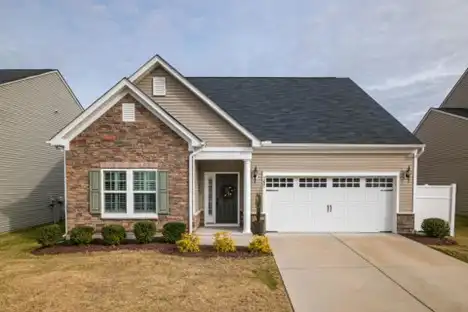Smart exterior upgrades boost indoor comfort, Home maintenance, Building repairs
Smart Exterior Upgrades Boost Indoor Comfort
22 June 2025
Boost Indoor Comfort with These Smart Exterior Upgrades
You’ve sealed the windows, upgraded the insulation, installed a smart thermostat, and yet… your living room still feels drafty, your heating bills climb higher every winter, and you just can’t seem to stay warm. If that sounds familiar, you’re not alone. Many homeowners focus entirely on the inside of their homes when trying to improve comfort, but the real solution may lie just beyond the walls. Your home’s exterior acts as the first line of defense against weather extremes, and if it’s outdated or underperforming, even the most high-tech indoor systems won’t be enough.
This is especially true in places like Madison, WI, where winters can be brutally cold, and the snowfall is no joke. A resilient, well-maintained exterior can drastically improve indoor comfort and energy efficiency.
In this article, we’ll highlight seven practical, effective upgrades you can make outside your home to create a more comfortable, cozy interior.
- Reinforce Your Roof
The roof plays a major role in maintaining indoor comfort, especially during extreme seasons. In Madison’s cold climate, your roof endures heavy snow loads, ice dams, and fluctuating temperatures. Over time, these conditions can weaken roofing materials and create small gaps or leaks that allow heat to escape and cold air to enter. This means your heating system has to work harder, and your home may still feel chilly despite the effort.
To prevent this, schedule regular roof inspections and don’t delay repairs. If your roof is older, consider replacing it with energy-efficient materials that offer better insulation. Metal roofing with proper underlayment or architectural shingles rated for cold climates can help retain heat. Hiring a local roofing company in Madison WI, is important—they’ll be familiar with the regional climate challenges and building codes and can recommend materials that stand up to Madison’s tough winters.
- Upgrade Exterior Doors for Better Seals and Insulation
Old or poorly fitted doors are a common culprit when it comes to drafts and temperature fluctuations. Air seeps in through gaps, and thin materials offer little resistance to the cold. Upgrading to solid-core or insulated steel doors can reduce heat loss and prevent cold air infiltration.
Look for doors that have energy-efficient ratings and proper weather stripping. Adjustable thresholds and door sweeps are simple additions that can further seal the gap between the door and floor. Even if you’re not ready to replace your doors entirely, addressing leaks and adding better seals can noticeably improve comfort.
- Replace or Reinforce Siding
Siding is often thought of as a cosmetic feature, but it plays a key role in insulation and moisture control. If your current siding is cracked or warped, you’re likely losing energy. Modern siding materials like insulated vinyl or fiber cement are designed to provide a tighter seal and better energy efficiency.
Some options come with built-in foam layers that improve your home’s thermal barrier. During replacement, installers can also add a moisture barrier and seal around windows and joints to prevent drafts.
- Install Exterior Window Awnings or Overhangs
While awnings are typically associated with shade in the summer, they can also help during the winter months. When designed correctly, they shield windows from rain, snow, and wind, protecting seals and preventing temperature changes that cause drafts. Overhangs reduce direct exposure and minimize thermal stress on window glass, which contributes to a more even indoor temperature.
Adding these structures over south- or west-facing windows helps manage both heat gain and loss throughout the year, acting as passive climate control tools without the need for electricity.
- Seal the Foundation
The foundation of your home might not be the first thing you think of when considering comfort upgrades, but it can have a major impact on indoor temperatures. Cold air and moisture often enter through cracks in the foundation or gaps in the crawlspace. This can lead to uncomfortable drafts on the first floor, uneven heating, and even mold or mildew issues if moisture builds up.
Sealing foundation cracks with caulk or expanding foam is a straightforward but important step. In older homes, adding rigid foam board insulation to basement walls can greatly improve heat retention.
- Landscape for Comfort: Windbreaks and Thermal Buffering
Strategic landscaping can help buffer your home from harsh weather and improve comfort without requiring structural changes. Planting evergreen trees or dense shrubs on the side of your house that faces prevailing winds can serve as a natural windbreak. This reduces wind chill near the exterior walls and decreases the rate of heat loss during winter.
Ground cover and mulch near the foundation also act as insulation, keeping the soil warmer and reducing heat transfer from your basement or crawlspace. Even small changes to your landscaping can make a surprising difference in your home’s thermal performance. The bonus? These improvements also enhance curb appeal and may increase property value.
- Build a Covered Entryway or Enclosed Porch
Adding a covered entryway or enclosed porch creates a transition zone between the outdoors and your main living area. This space serves as a buffer, reducing the amount of cold air that enters your home each time you open the door. It also gives you a place to store wet boots, snow gear, and jackets, helping to keep the rest of your home dry and clean.
Even a simple awning or vestibule can make a noticeable difference. For homeowners with a bit more space and budget, enclosing an existing porch can add year-round usability and further improve insulation. This type of upgrade not only boosts comfort but also adds character and usable square footage to your home.
Improving indoor comfort doesn’t end with what’s inside the walls. The state of your home’s exterior has just as much—if not more—impact on how comfortable and energy-efficient your interior feels. By taking these steps, you can create a more welcoming indoor environment without relying entirely on your heating system.
Each of these projects works together to form a comprehensive shield against the elements, helping you stay cozy through the seasons and easing the strain on your energy bills.
Comments on this guide to smart exterior upgrades boost indoor comfort – home external improvement article are welcome
3D rendering
3D Posts
Essential factors in 3D printing guide
The impact of 3D architectural rendering in modern architecture
Construction News
New UK Housing and Housebuilding
Brexit Impact on UK Construction Industry
Comments / photos for the smart exterior upgrades boost indoor comfort – home external renewal page welcome.





